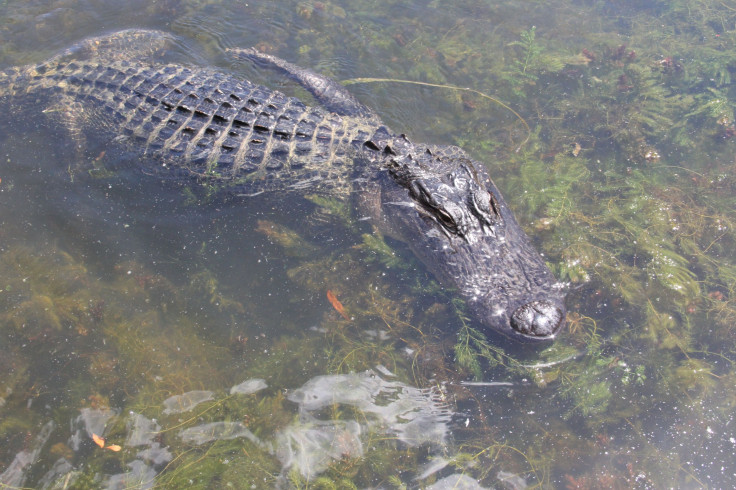Alligator Eats Baby Gator In East Lake, Florida [Photos]

A photographer took a picture Tuesday which showed a baby alligator being eaten by an adult alligator at East Lake, Florida.
According to a report by WTSP, a CBS-affiliated television network, the photographer, Nancy Bloch, was in East Lake on Tuesday searching for eagles for her website, East Lake Wildlife, when she noticed an alligator sunning itself.
After that she noticed that the alligator’s mouth was full of something. Moments later she realized that it was another alligator. She clicked pictures of the scene and posted it on her Facebook page.
Gator Bites! Gator eats gator!🐊
The pictures justified a study which stated that approximately six to seven percent of baby alligators are victims of cannibalism.
According to a report by LiveScience in 2011, researchers from the Florida Fish and Wildlife Conservation Commission wrote in the journal Herpatologica that “Even the seemingly low rate of juvenile mortality attributed to cannibalism reported here may be an important factor in population regulation.”
Data taken from years of alligator tagging and tracking exercises in Orange Lake, a waterbody near Gainesville, Florida, was analyzed by the researchers.
The report further stated that between 1981 and 1987, the stomachs of 267 adult alligators which were killed by hunters were inspected for tags in a bid to discover how many tagged alligators were eaten by other alligators.
It was discovered that 33 stomachs had 56 tags. It was also found that one of the alligators had eaten 14 other alligators. The records which were connected with the tags showed that 91 percent of alligators who were eaten were under the age of three years, an age which is considered to be juvenile according to alligator standards.
The next step of the research was to inspect as to how the cannibalism sample would affect the alligator population in Orange Lake. In order to do this, the researchers had to understand how long the tags remained in the stomachs of alligators till the time they excreted.
Hence, 10 alligators were made to eat five tags each. Then they were subjected to periodic x-ray checks for the next 588 days. It was discovered that 76 percent of tags (38 tags) remained in the stomachs of the alligators.
Considering the size of the alligator population in Orange Lake and the probability of finding proof of alligator cannibalism, the researchers estimated that around six to seven percent of young alligators were eaten by the adult ones. However, they also stated that this percentage could change from place to place as the rate of cannibalism would depend on the availability of other food options in the particular area.
© Copyright IBTimes 2025. All rights reserved.





















